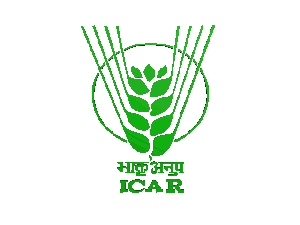Genetic variability is a major concern to define any livestock breed and to preserve the maximum amount of genetic diversity, it is important to characterize different breeds so that we can know how unique or different a breed is from other native populations. The genetic characterization is a further step to answer questions on taxonomy, evolution, domestication processes, management of genetic resources and setting conservation plans for their effective utilization.
The objective of these guidelines on Molecular characterization of animal genetic resources is to help countries to plan and implement effective analyses of the genetic diversity of their AnGR, so that resulting information can contribute to the development of effective plans for sustainable use. Molecular characterization should be undertaken as part of a comprehensive national programme for management and conservation of AnGR in concert with phenotypic characterization.
Objectives of genetic characterization
Genetic characterization assesses the genetic constitution of a breed. It assesses the genetic uniformity, admixture or subdivisions, inbreeding, or introgression in the population. It is also helpful in providing insight into breed formation, informing about closest wild ancestral species and localization of the site of domestication. Further, these can be used in parentage testing.
Sampling Design
Molecular characterization should ideally be done along with phenotypic characterization, preferably. For molecular characterization, it should be ensured that samples are drawn in such way that it should cover most of the genetic variability in the population.
Choice of samples
Almost all cells or tissues may be used for DNA analysis for genotyping by any methods. However, most common tissue is blood. Generally 10-15 ml of blood should be collected as a sample from an individual. Other samples like semen, hide, bone, tissue (e.g. ear tissue), feaces, fossils, plucked hair with root cells (cut hairs can be used for mtDNA analysis) and feathers can also be used.
Number of samples
For reliable estimation of allele frequencies, at least 25 and preferably 50 animals per breed should be typed for genetic characterization. More than 50 animals should be collected to allow for possible losses, mistyping or missing. If there are population subdivisions, different subtypes or agroclimatic zones, sampling a larger number of animals is recommended.
Choice of genetic marker
Microsatellite markers analysis methodologies are DNA based and this brings advantages that are both attractive as well as amenable. For example: (i) the DNA samples can not only be isolated very conveniently from blood of live individuals but can also be isolated from tissues like sperm, hair follicle, and even from archival preparations, (ii) the DNA samples can be stored for longer periods and can readily be exchanged between the laboratories, and (iii) the analysis of DNA can be carried out at an early age or even at the embryonic stage, irrespective of the sex.
MICROSATELLITES MARKERS
International Society of Animal Genetics(ISAG)–FAO Advisory Group on Animal Genetic Diversity have recommended panels of 30 microsatellite markers for nine major livestock species-cattle, buffalo, sheep, goat, horse, donkey, camel, pig and chicken (Molecular Genetic Characterization of Animal Genetic Resources). The list of these which can also be obtained from the website
www.globaldiv.eu/docs/Microsatellite%20markers.pdf. Use of these markers helps to obtain a global view of animal genetic diversity.
Methodology
Extracting DNA
Several reliable protocols for DNA extraction are available. Most commonly used protocols are based on proteinaseK/SDS lysis of cells, organic extraction and alcohol precipitation. These are technically simple and cost effective methods DNA collected on FTA cards can be extracted by washing the FTA disks with TE buffer.
Genotyping
automated microsatellite genotyping i.e. amplification using Fluorescent dye labeled primers and genotyping by automated DNA sequencer should be preferred over manual genotyping through running Urea-PAGE polyacrylamide gels followed by silver staining technique.
Data analysis
Some of the software packages most commonly used in for genetic analysis are-
POPGENEBottleneck,AMOVA (Analysis of Molecular Variance) Arlequin GENEPOP GENECLASS FSTAT Phylip
Mitochondrial DNA Marker
Other Makers
- Y-chromosomal marker
- Single-nucleotide polymorphisms (SNP)
- Copy number variations (CNV)
- Genome sequencing
Genomic characterization of animal genetic resources
With emerging genomic sequencing techniques, focus has changed to single nucleotide polymorphism (SNPs), insertion and deletions in genome (indels), copy number variations (CNVs), which might contribute to adaptation and economic traits. A number of methods have been developed for detection of diversity across the genome that may suggest the effect of selection. These genome-wide association studies (GWAS) have become possible with new genomic tools. Genomics is creating new opportunities for increased response to selection and improved management of genetic diversity. This will also help in relating phenotypes to non-coding RNA molecules and to epigenetic phenomena. Genomic analysis has become a vast area of research due to diversity of genes, traits and breeds.
(source:Genetic Characterization)





